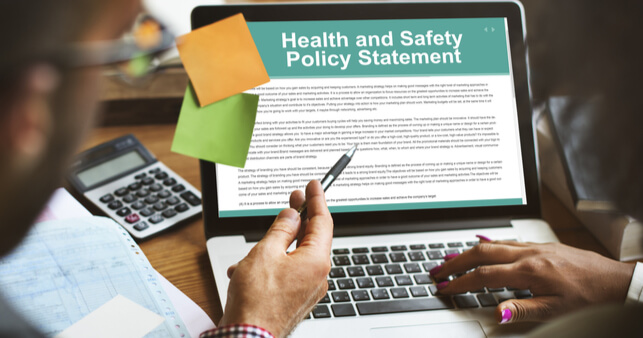
Health And Safety Information
Employers have a duty to keep employees and contractors informed on health and safety regulations in the workplace – including potential hazards, as well as safe methods to avoid them. There may be several ways to disseminate the information but it is crucial that workers can make sense of it and put it into practice safely.
Informing Workers About Health And Safety
It should neither be difficult, nor time-consuming, for workers to gain access to the health and safety information. In order to be compliant with the Health and Safety at Work Act 2015 (HSWA), employers must ensure that relevant health and safety information is readily available in the form of:
notices and posters in the workplace environment
guidelines in the company handbook
brochures and pamphlets
However, these distribution methods alone are not enough. Maintaining a safe work environment is a team effort and should involve everyone in the organisation. This can be achieved in the following ways:
1) Safety Briefings
Known as ‘toolbox talks’ in some industries, safety briefings are a simple and effective way to speak about health and safety to a large group of people. Safety Briefings are usually informal meetings held before the start of a work day to inform employees on:
updates to company policy or legislation
addressing health and safety risks in the workplace
demonstration of safe working procedures
Be sure to record the details discussed in these meetings and pass on the information to any workers who were not present.
2) Psychological Health and Safety
Employers also have a legal obligation to ensure workers do not suffer from psychological harm. This includes minimising excessive workplace stress that may occur through bullying, overwork or a lack of autonomy.
Employers who fail to recognise psychological health and safety risks within the workplace can face financial penalties, especially if incidents are reported and ignored. It is essential therefore that a clear workplace policy is in place which details how employees can make complaints. The employer should also ensure that all incidents are responded to in a timely manner.
3) Employee Assistance Programs (EAPs)
An Employee Assistance Program (EAPs) is a free and confidential service that employers may choose to offer to their employees as part of a wider health and safety policy. EAPs address the wellbeing of workers by providing individual advice and support.
EAPs providers offer a wide range of services in the form of counselling, workshops and training programs. The information in these programs can be a general overview of health and safety in the workplace or address key issues, for example manual handling, misconduct or poor performance.
EAPs do more than address issues in the workplace, many providers offer counselling and psychology sessions to address issues in a person’s life that may be affecting their relationships, productivity and wellbeing. Sometimes these sessions can reveal the underlying cause of poor performance or misconduct.
How To Introduce EAPs
EAPs can be offered in-house or arranged completely by a third-party provider. Employers may:
contact an external provider and pay a set fee based on the number of employees
engage a single external provider when the need arises and pay per session. This option may have implications for employee confidentiality so should be managed carefully
nominate a single contact person within the business to reach out to a different external provider each time, depending on the particular issue faced by the employee
Right To Refuse Work
Every worker has the right to refuse dangerous work. Any employee or contractor can refuse work if they have good reason to believe the task is dangerous and poses a risk to themselves or others.
In this case, the worker should report the issue to a Person Conducting a Business or Undertaking (PCBU) or employer. Once the issue has been discussed, the worker does not have to start the task if they still think the task is unsafe to themselves or others.
For employers, this means all situations must be thoroughly investigated if reported, despite personal opinions on the safety of a task. Importantly, employers should never force an employee or contractor to continue working if they believe the task to be unsafe.
The Responsibility Of PCBUs
A PCBU is responsible for the health and safety of people in the workplace. This applies to employees, contractors, customers, clients and the general public.
The key responsibilities of a PCBU are to:
establish a safe work environment for workers
protect people outside of the company from health and safety risks including visitors, customers and the general public
identify risks and provide solutions to reduce the risk of personal injury
A PCBU cannot discriminate against a worker who has exercised their right to be safe in the workplace. If a PCBU discriminates against an employee or encourages them to do something unsafe, the employee can file a personal grievance with the Employment Relations Authority for discrimination and notify WorkSafe of the unsafe practices.
For advice on how to inform employees on workplace health and safety, contact Employsure on 0800 658 726.



